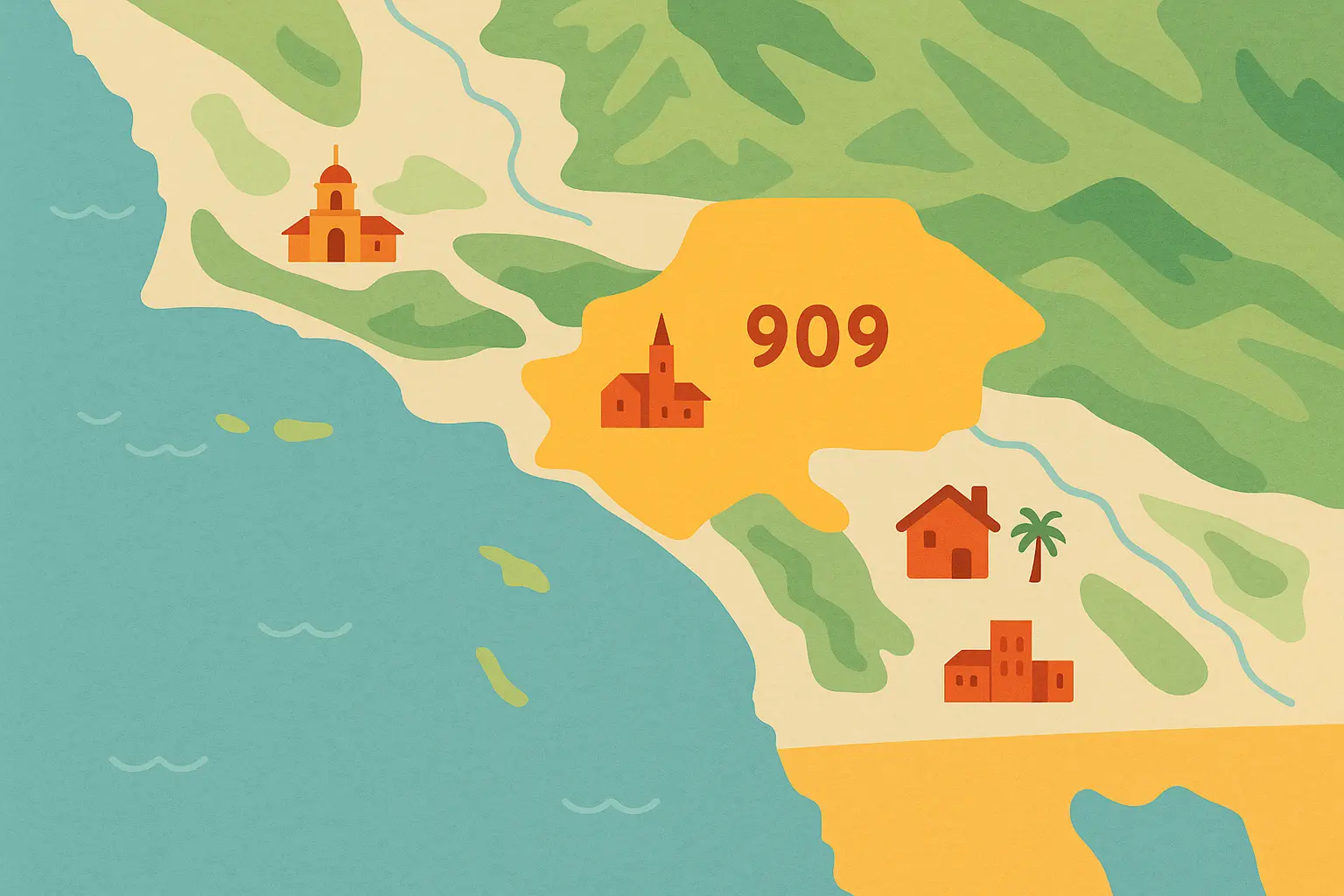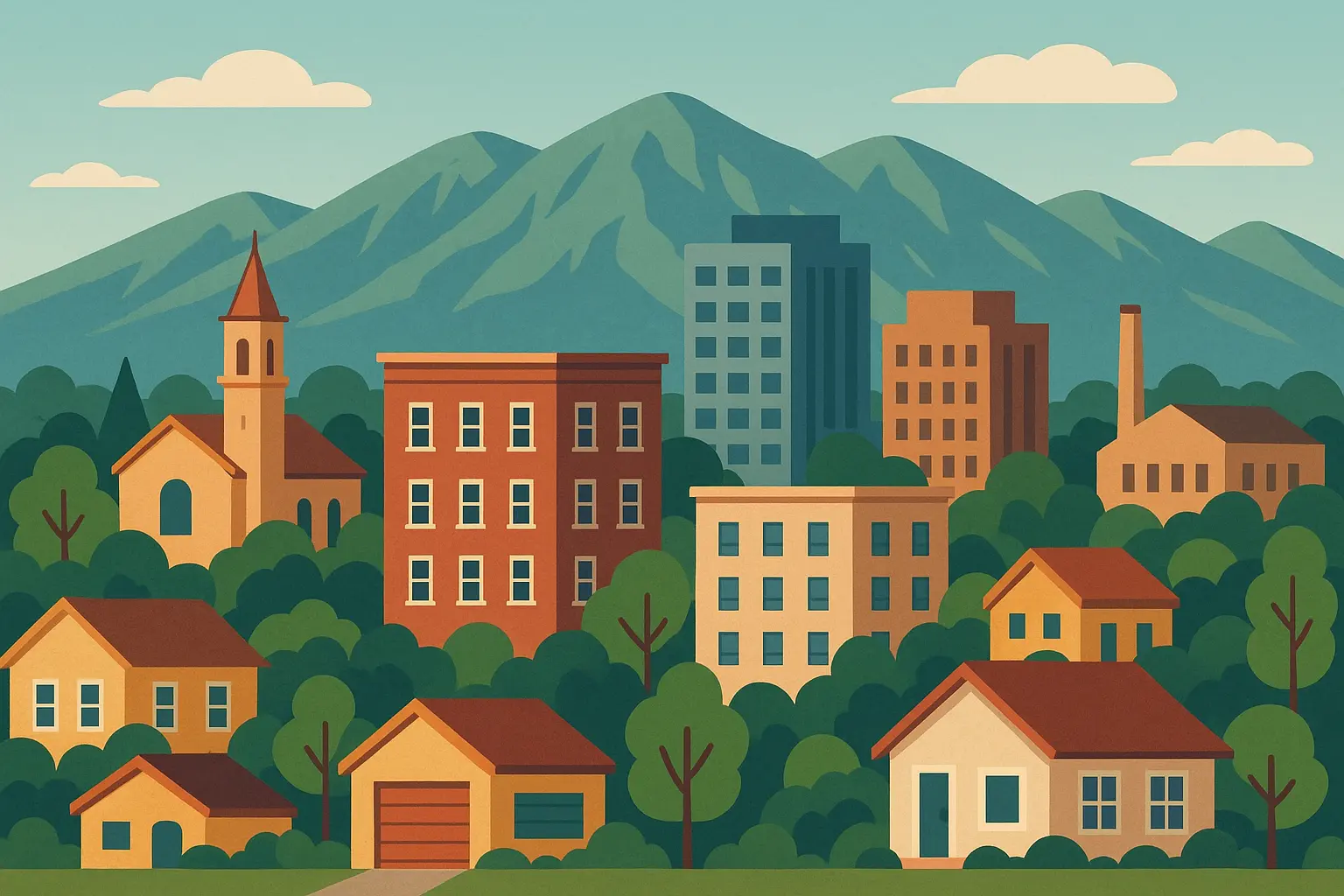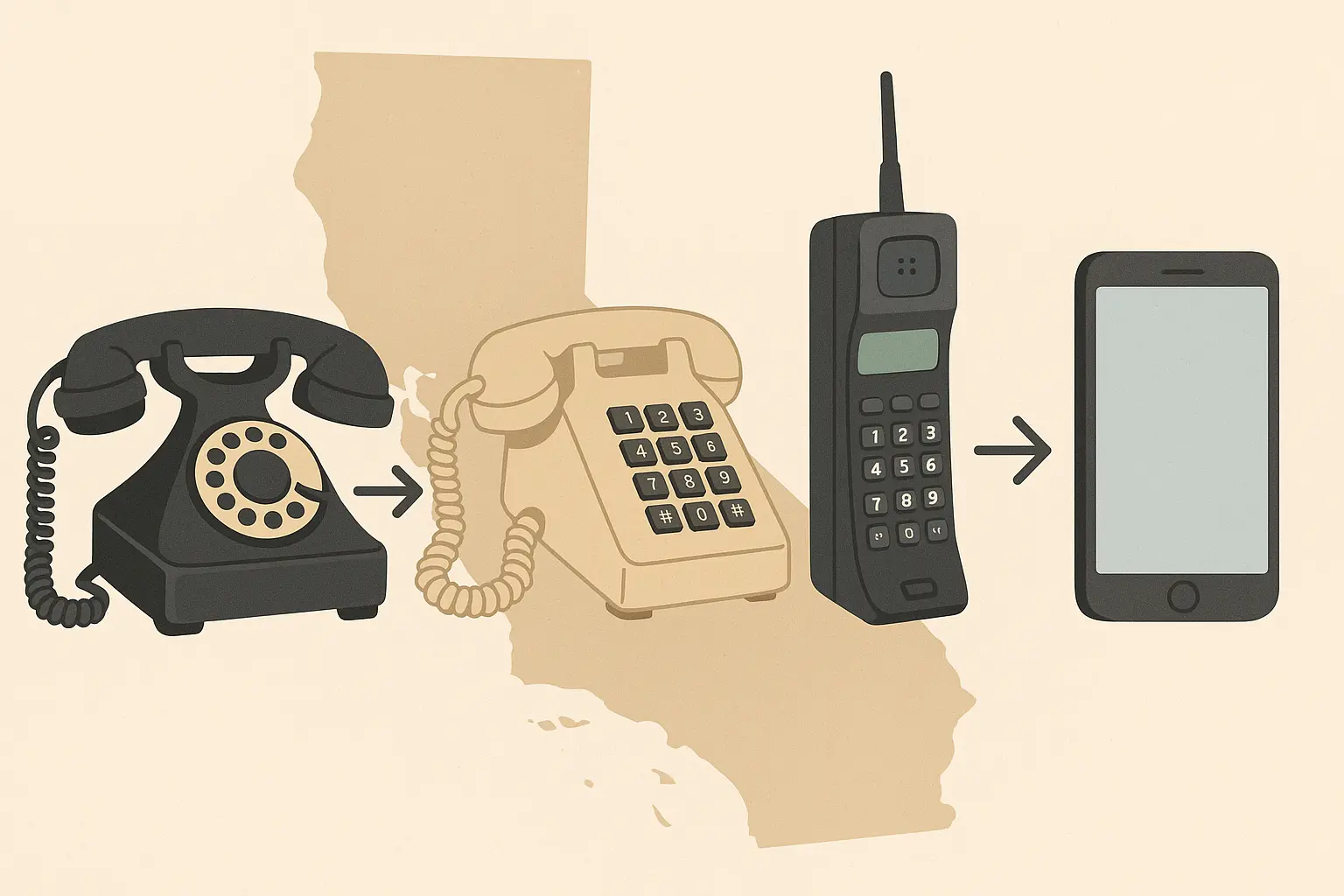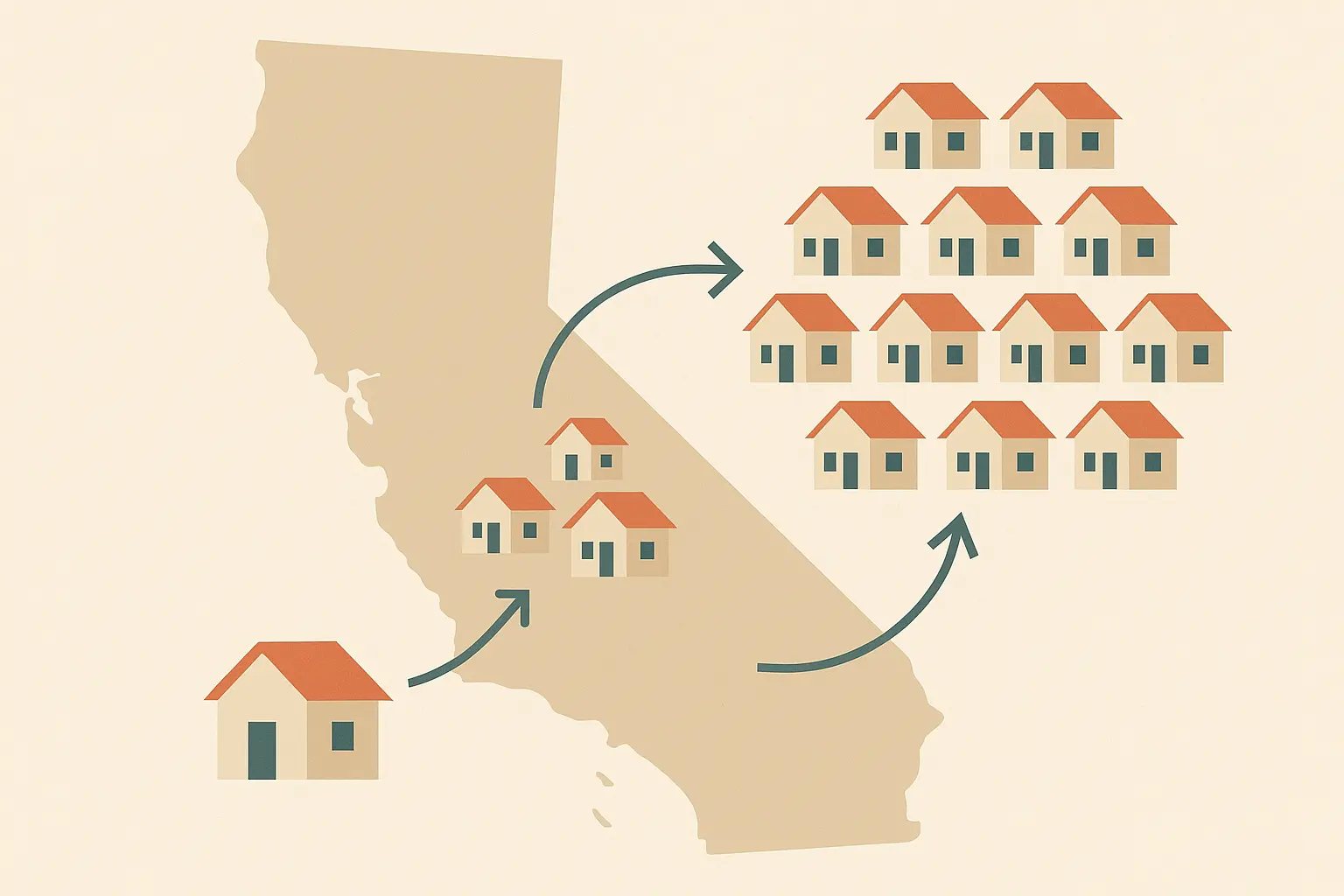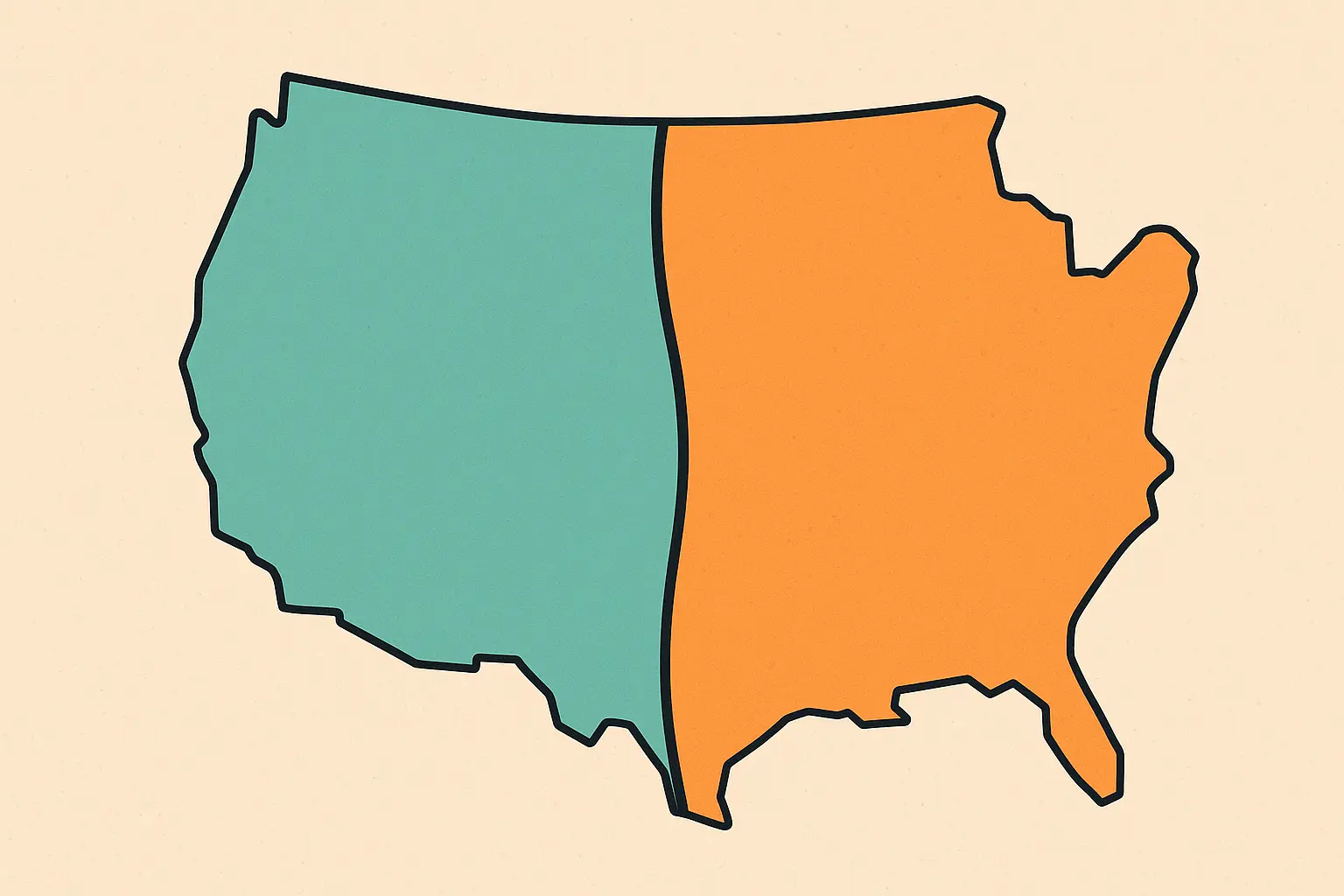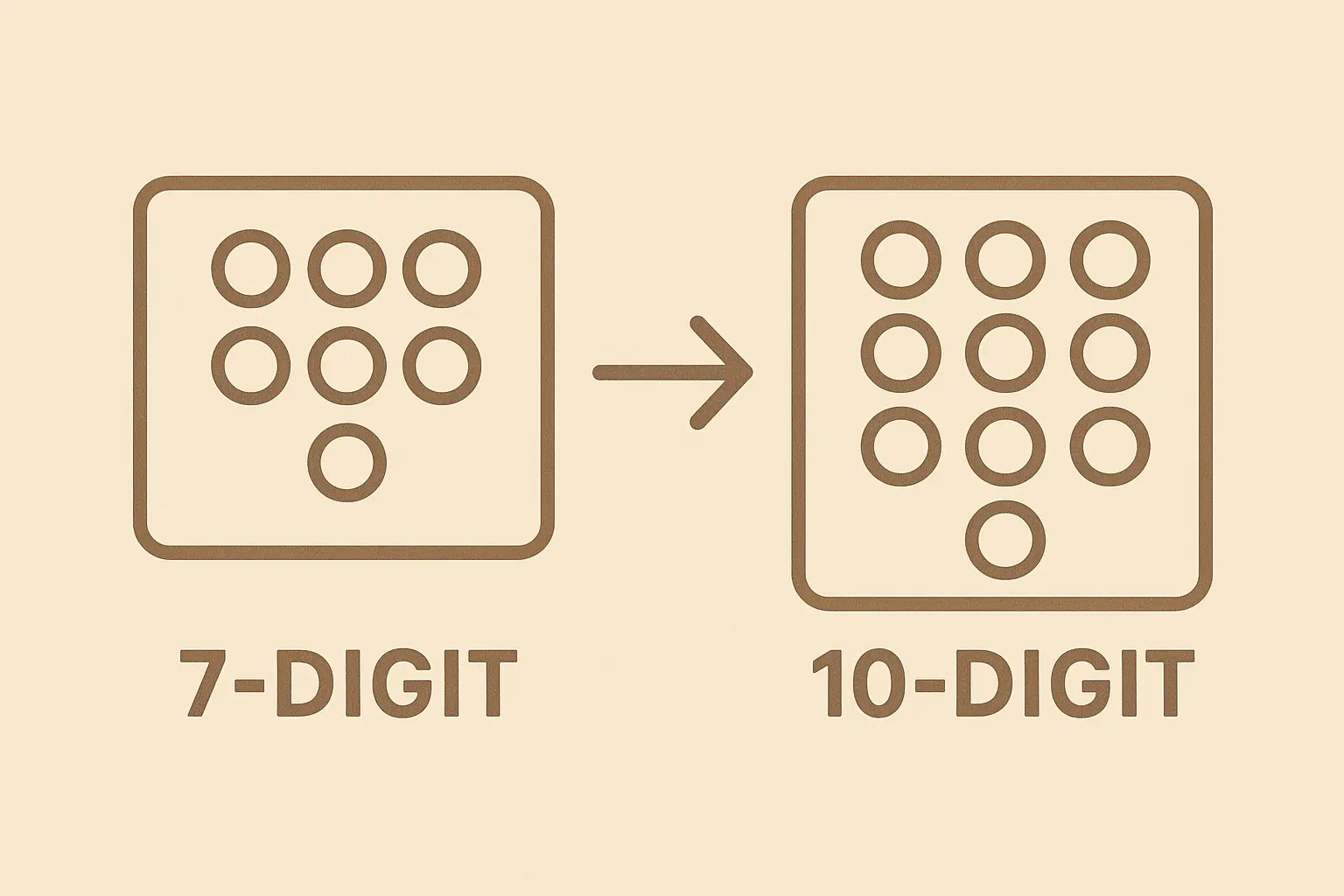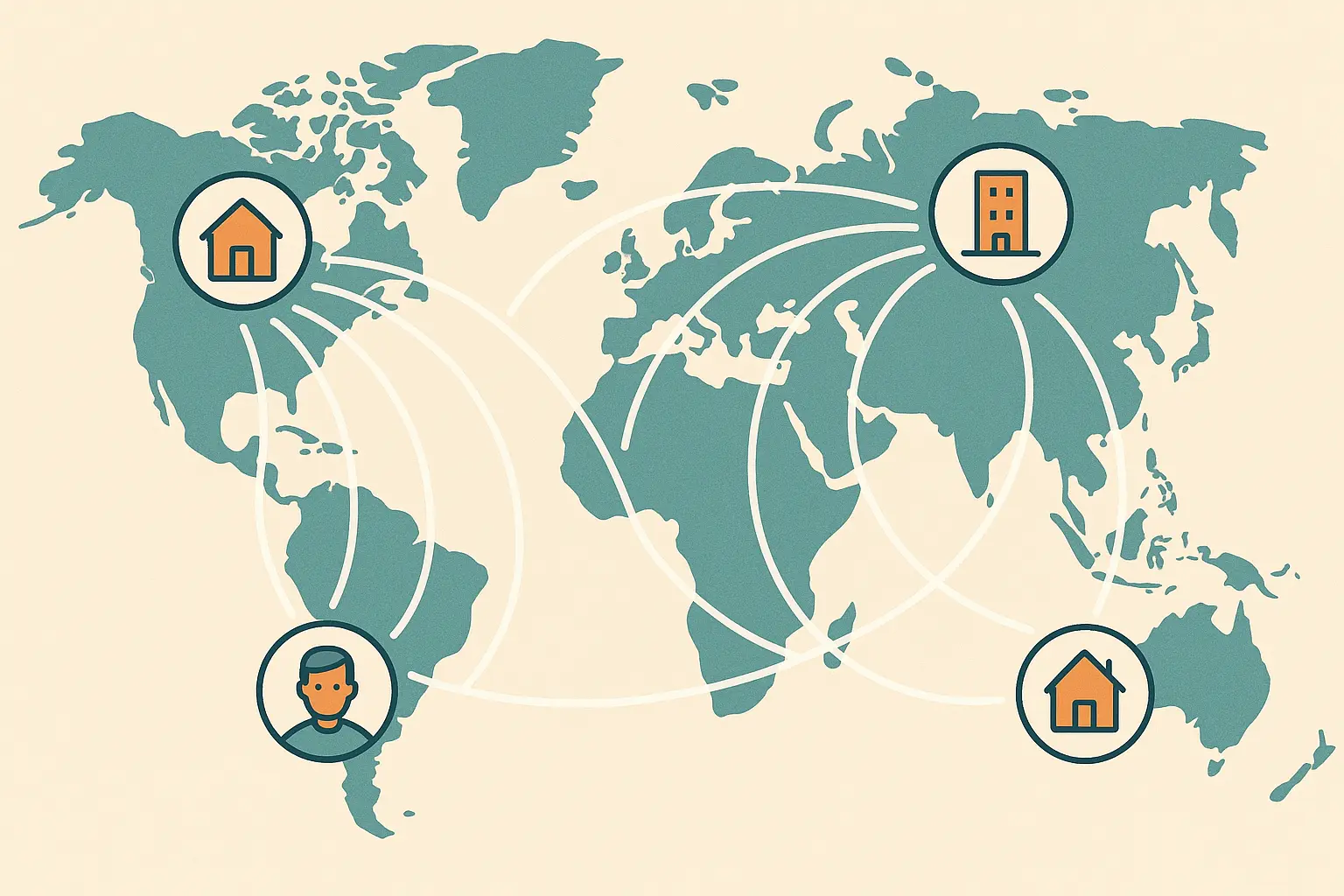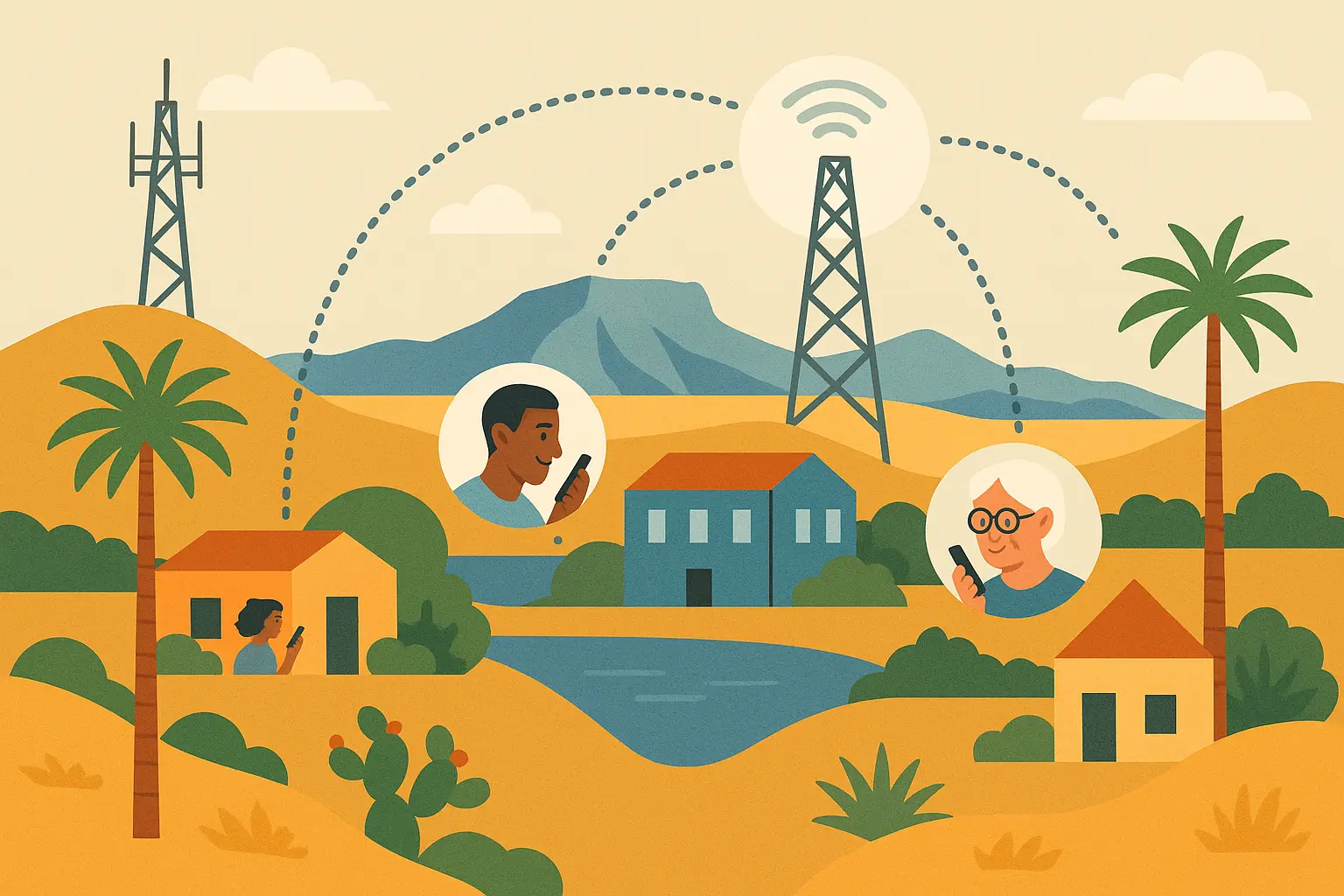If you’ve ever tried explaining where you live in the 909 to someone from out of state, you know the struggle. “It’s east of LA… but also kind of north… and it goes all the way to the desert.” The truth is, even locals don’t realize how weird and sprawling this area code really is. Over 3 million people call this region home, yet most of us are walking around completely clueless about how our own phone system works.
Table of Contents
Table of Contents
-
Geographic Coverage: Where 909 Actually Reaches
-
The Real Story Behind 909’s Creation
-
Area Code Splits That Changed Everything
-
Phone Number Chaos: Managing Multiple Area Codes
-
Why Your Business Needs Better SMS Management
-
Final Thoughts
TL;DR
-
The 909 stretches way further than you think – from LA’s eastern border all the way to Arizona and Nevada
-
Your “local” number might actually require 10-digit dialing now thanks to overlay systems
-
The 951 split in 2004 created confusion that businesses are still dealing with today
-
Three different area codes (909, 951, 840) now serve the same geographic region
-
Managing multiple phone numbers across these codes creates real headaches for businesses
Geographic Coverage: Where 909 Actually Reaches
Ask anyone where 909 is and they’ll say “somewhere past LA.” But this area code is basically California’s wild west – it stretches from suburban cookie-cutter neighborhoods to actual tumbleweeds-and-cacti desert towns. We’re talking about places that have absolutely nothing in common except those three digits.
The diversity here is pretty incredible too. Mexican ancestry represents the largest group at 1,400,909 residents (46.1% of the total population), followed by German (169,272 | 5.6%), Irish (134,494 | 4.4%), English (132,469 | 4.4%), and Central American (113,950 | 3.7%) ancestries. This mix reflects just how varied the landscape really is across the entire region.
The Inland Empire’s Hidden Boundaries
The 909 doesn’t follow neat city lines. Instead, it carves out this massive chunk of Southern California that extends way beyond what most maps show you. The boundaries seem almost random when you really look at them – mountain communities, desert towns, and suburban developments that feel completely disconnected from each other.
When you’re looking at where 909 actually covers, you’ll notice how the boundaries make no logical sense. The region includes everything from bustling urban centers to remote communities where your nearest neighbor might be a mile away. This creates unique challenges for businesses trying to establish any kind of consistent local presence.
Major Cities You’d Expect (And Some You Wouldn’t)
San Bernardino and Riverside are the obvious big players, but 909 also covers places that don’t always make it onto typical area code maps. Rancho Cucamonga, Ontario, and Fontana represent the suburban heart of the region, while smaller communities scattered throughout add layers that most people never think about.
|
Major 909 Cities |
Population Tier |
Primary Industries |
|---|---|---|
|
San Bernardino |
Large Urban |
Government, Healthcare |
|
Ontario |
Large Suburban |
Logistics, Aviation |
|
Fontana |
Large Suburban |
Manufacturing, Distribution |
|
Rancho Cucamonga |
Medium Suburban |
Retail, Professional Services |
|
Upland |
Medium Suburban |
Residential, Small Business |
|
Chino |
Medium Suburban |
Agriculture, Residential |
What’s really wild is discovering how 909 reaches into communities that feel worlds apart from the main urban centers. These aren’t just bedroom communities – they’re distinct economic and cultural regions that happen to share the same three-digit prefix.
Desert Communities That Stretch to State Lines
Here’s where it gets really interesting – 909 reaches all the way out to Victorville and Barstow, extending into desert regions that feel completely disconnected from the urban Inland Empire. These communities represent a totally different lifestyle and business environment, yet they share the same area code as dense suburban developments.
The Geographic Puzzle That Confuses Everyone
Trying to explain where 909 is located to someone new to the area is nearly impossible. The coverage spans multiple counties, climate zones, and economic regions. Businesses struggle with this when they’re trying to establish local presence across the entire region.
Picture a real estate company operating in both Ontario and Barstow. Their Ontario office deals with suburban families looking at $500,000 homes, while their Barstow branch serves rural clients interested in $200,000 properties on large lots. Despite serving the same area code, these markets require completely different approaches.
For businesses managing communications across such diverse markets, understanding proper phone number formatting becomes essential when dealing with customers from different regions. The complexity creates operational challenges that extend far beyond simple telecommunications.
The Real Story Behind 909’s Creation
Back in the day, getting a phone number was simple. Then California went crazy with growth, and suddenly everyone needed phones. The 909 was supposed to fix the problem. Spoiler alert: it didn’t.
When 909 was first implemented, nobody predicted the demographic shifts that would reshape Southern California. The region was supposed to be a simple solution to number shortages, but it became something much more complicated as millions of new residents transformed the Inland Empire from rural communities into major metropolitan areas.
When California Ran Out of Phone Numbers
Population growth in the Inland Empire created a telecommunications crisis that caught everyone off guard. The existing area codes couldn’t handle the demand, and phone companies had to act fast. The 909 became their solution, but the implementation wasn’t perfect.
Longtime residents remember when getting a phone number was straightforward. The 909 changed all that, introducing complications that nobody anticipated.
The Original Coverage Area vs. Today’s Reality
The original 909 territory was actually smaller and more manageable than what we see today. Population explosions in cities throughout the region forced multiple expansions and changes that created the system we’re dealing with now.
The economic impact of this growth is significant, with the median household income reaching $87,272 and the median family income at $96,288, reflecting the region’s evolution from rural communities to major suburban centers. These income levels show how the area transformed into an economic powerhouse that telecommunications infrastructure struggled to keep pace with.
Population Growth That Nobody Predicted
The Inland Empire’s growth caught everyone off guard. What started as a relatively simple area code assignment became a telecommunications nightmare as millions of new residents moved into the region. This growth pattern explains why we ended up with the overlay systems that confuse people today.
Housing developments sprouted across the territory faster than phone companies could plan for them. Each new subdivision needed hundreds of phone numbers, and the original numbering scheme simply couldn’t accommodate the demand.
Area Code Splits That Changed Everything
In 2004, half the region woke up with new phone numbers. Imagine printing thousands of business cards, then finding out your number changed overnight. Local businesses were furious. Customers were confused. Some companies never recovered from the “which number do I call?” chaos.
The 951 Split: When Half the Region Got New Numbers
Riverside County got hit hardest when 951 was carved out of the original 909 territory. Businesses had to update everything – letterheads, business cards, websites, advertising. The customer confusion this created was brutal.
Many businesses during this transition needed to learn how to forward text messages to email to manage communications across their old and new numbers effectively. The split forced companies to completely rethink their communication strategies.
The new boundaries suddenly made geographic sense in some ways but created marketing nightmares in others. Companies that had built their identity around serving “the 909” suddenly found half their customers in a different area code.
Which Areas Lost Their 909 Status
The split wasn’t random – specific communities were reassigned to 951 based on geographic and demographic factors. Understanding which areas were affected helps explain why some businesses still struggle with identity and marketing challenges.
Riverside, Corona, and surrounding communities became 951 territory overnight. The 909 retained San Bernardino County and parts of Los Angeles County, but the psychological impact of the split created lasting confusion about regional identity.
The 840 Overlay: Adding Confusion to Complexity
Just when people were getting used to the 909/951 split, telecommunications authorities introduced 840 as an overlay. This means the same geographic area can have phone numbers with different area codes, creating a whole new level of confusion for businesses and residents.
The implementation of the 840 overlay became even more complicated when new dialing requirements were introduced. “Starting Saturday, anyone calling a 909 number will need to dial ‘1’ plus the area code plus the telephone number” according to Spectrum News, fundamentally changing how local calls work in the region.
The 840 overlay system means that neighbors on the same street might have completely different area codes. This creates practical problems that go far beyond simple dialing procedures.
Why Overlays Exist (And Why They’re Frustrating)
Overlays were supposed to be the elegant solution to number shortages, but they’ve created practical problems that nobody anticipated. Businesses now need to manage multiple area codes for the same service area, and customers never know which number to call.
Picture this: You’re a plumber in Rancho Cucamonga. Your original number is 909, but you got a second line that’s 840, and you serve customers in Riverside who think you’re long-distance because they’re 951. Three area codes, same neighborhood. Welcome to the 909 life.
The overlay situation demonstrates how telecommunications solutions can create more problems than they solve. What seemed logical from a technical standpoint became a customer service nightmare for businesses trying to maintain consistent communication with their clients.
Phone Number Chaos: Managing Multiple Area Codes
Gone are the days when you could dial seven digits and reach your neighbor. Every call now requires the full area code, which sounds minor but has created significant changes in how businesses operate and how customers interact with local services. With 62.0% of the area’s 3,038,297 residents actively participating in the labor force, the impact of dialing changes affects a working population that relies on phone communications for business operations.
The current system requires 10-digit dialing for all calls, even local ones. This change has created operational headaches for businesses that serve the entire region, especially when customers don’t understand which numbers are actually local.
The 10-Digit Dialing Reality
Every call now requires the full area code, which sounds minor but has created significant changes in how businesses operate and how customers interact with local services.
Understanding proper phone number formatting has become crucial for businesses operating across the region’s multiple area codes. Numbers that used to work seamlessly now require system modifications that can cost thousands of dollars.
Small businesses struggle with the technical requirements of 10-digit dialing. Their phone systems weren’t designed for this complexity, and upgrading equipment becomes an unexpected expense that many companies can’t easily absorb.
What Counts as “Local” Anymore
The definition of local calling has become murky with multiple area codes serving the same region. Businesses need to understand these distinctions for billing purposes and to properly set customer expectations about call costs and connection procedures.
Your number might connect to someone across the street or someone 50 miles away in the desert. The geographic boundaries no longer match the telecommunications boundaries, creating confusion about what constitutes a local call versus a long-distance connection.
Business Challenges Across Multiple Area Codes
Companies serving the entire region often maintain phone numbers with different area codes to appear local in various communities. Managing communications across these numbers creates operational complexity that many businesses underestimate.
|
Business Challenge |
Impact Level |
Cost Factor |
|---|---|---|
|
Customer Confusion |
High |
Medium |
|
Marketing Consistency |
High |
High |
|
Call Routing |
Medium |
High |
|
Staff Training |
Medium |
Low |
|
Technology Updates |
High |
High |
|
Cost Management |
Medium |
Medium |
Managing text messages across multiple phone numbers has become particularly challenging. Each number requires separate monitoring, and businesses often miss important customer communications because messages arrive at different phone numbers that aren’t properly monitored.
Why Your Business Needs Better SMS Management
Here’s the thing – if you’re running a business across multiple 909 numbers, you’re probably missing texts. A lot of them. The rise of text-based communication has made this problem even worse, especially with scam concerns affecting the region.
The importance of proper SMS management has become even more critical with the rise of text-based scams. “In our latest scam tracker report, it showed we had about 800 people report this to us” according to the Better Business Bureau, highlighting how text message security affects businesses across all area codes. The region faces particular vulnerability because customers often don’t recognize which numbers are legitimate business contacts versus potential scams.
The Multi-Number Communication Problem
When your business operates across the region with different local numbers (909, 951, 840), tracking customer text messages becomes nearly impossible. Auto Forward SMS eliminates this chaos by forwarding all SMS messages to your email, ensuring you never miss important customer communications.
Take a landscaping company that serves customers from Chino Hills to Victorville using three different phone numbers. Before implementing SMS forwarding, they missed a $15,000 commercial project bid because the client’s text went to their secondary 840 number, which nobody monitored regularly. Now all messages route to the owner’s email, ensuring immediate response regardless of which number customers use.
For California businesses dealing with similar challenges, learning how to forward text messages on Android devices becomes essential for maintaining communication consistency across the region. The complexity demands sophisticated solutions that small businesses can actually implement without breaking their budgets.
Streamlining Operations Across the Inland Empire
Auto Forward SMS is particularly valuable for service businesses, real estate professionals, and companies with multiple locations throughout the region. You can maintain local presence in San Bernardino, Riverside, and desert communities while centralizing all text message management.
SMS Management Setup Template:
-
Inventory Phase: List all business phone numbers across 909, 951, and 840 area codes
-
Forwarding Rules: Configure email destinations for each number type
-
Response Protocols: Establish 24-hour response standards for forwarded messages
-
Monitoring System: Set up tracking for message volume and response times
-
Backup Procedures: Create alternative contact methods for system maintenance
-
Staff Training: Ensure team understands forwarded message handling procedures
Businesses new to SMS forwarding can benefit from getting started with Auto Forward SMS to properly configure their multi-area code communication system. The region presents unique challenges that require specialized approaches to message management.
Geographic Flexibility Without Communication Gaps
The service ensures reliable message delivery even in the region’s challenging geographic areas where cellular coverage varies between urban centers and remote locations. Set up forwarding rules that route messages appropriately while maintaining oversight of all communications across your Inland Empire operations.
Similar communication challenges affect other California regions, as seen with 310 area code business impact studies showing how area code complexity affects customer outreach statewide. The 909 region faces particularly acute challenges because of its vast geographic spread and diverse economic zones.
Final Thoughts
Look, the 909 isn’t going to get simpler anytime soon. More people keep moving here, which means more numbers, which probably means more area codes. The best you can do is roll with it and maybe laugh about how complicated it is to live somewhere that needs an instruction manual just to make a phone call.
Whether you’re a longtime resident dealing with area code changes or a business trying to establish presence across the entire region, the key is adapting to the current reality rather than fighting it. The overlay systems and multiple area codes aren’t going anywhere, so finding tools and strategies that work within this framework becomes essential for success.
The 909 will continue evolving as the Inland Empire grows. New developments, changing demographics, and advancing technology will create fresh challenges that businesses need to anticipate. Companies that invest in flexible communication systems now will be better positioned to handle whatever changes come next.
Smart businesses recognize that the complexity isn’t just a telecommunications issue – it’s a competitive advantage waiting to be leveraged. Companies that master multi-area code communication can serve customers more effectively than competitors who struggle with the technical requirements. The region rewards businesses that embrace its complexity rather than trying to simplify what can’t be simplified.

